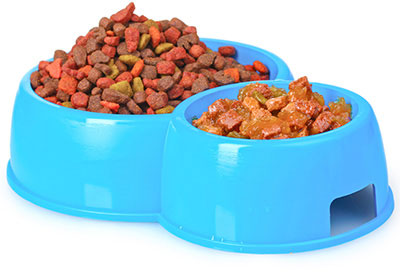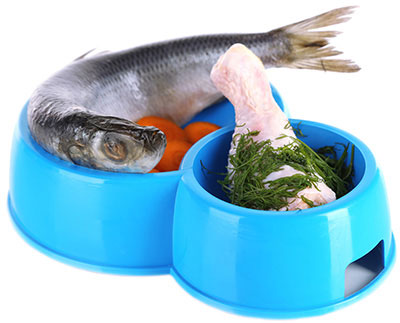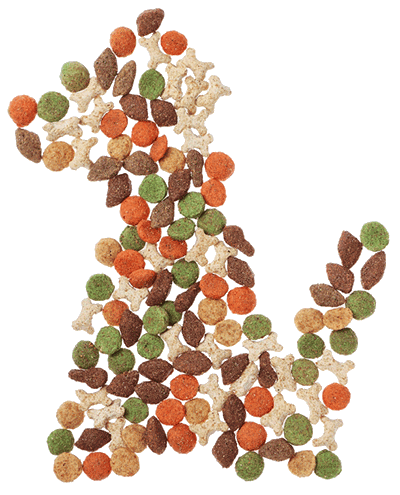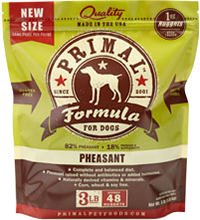Is Your Pet Food Healthy?

When it comes to our health, there is a direct link between the quality of the food we put in our mouth and how healthy our bodies are. There is also a direct link between what we eat and the 4 biggest killers: cancer, diabetes, heart disease, and obesity.
What most people are not aware of is that processed pet food is as bad for our pet's health as processed human food is for ours. Just as our rates of chronic disease a skyrocketing, so our pets as both food chains become heavily industrialized. By making sure we feed our pets healthy food choices, we help make sure they live longer and healthier lives. Let's see how.
The genetics off a dog is 80-90% similar to that of humans. They live in our homes, breathe the same air, walk on the same pesticide-ridden grass we do, drink the same water, and eat similar types of highly processed foods. It stands to reason that they will suffer the same diseases we do. Cancer now affects a staggering 1 in 3 dogs, and the number of dogs with diabetes has tripled. An estimated 54% of dogs and cats (93 million) are overweight or obese. 10% of dogs suffer from heart disease.(1)
One of the most important things we can do for our pets is to make sure we give them a healthy diet. Let's go over some simple guidelines that will help you tell the different between healthy vs. unhealthy pet food choices.
Don't Fool Yourself
 There is a reality when it comes to commercialized pet food. No matter how healthy the ingredient list, no matter how many bad ingredients are missing from the list, and no matter how organic it is, if it comes from a can or a bag and it has been heavily processed, then it is a far cry from natural food. We can rationalize all we want, but fresh food is fresh food. Processed, commercialized pet food is processed, commercialized pet food that is not fresh. And if it contains meat that is not organic or pasture-raised, then that meat comes from factory farms and likely contains antibiotics, growth hormones, steroids, and other undesireables.
There is a reality when it comes to commercialized pet food. No matter how healthy the ingredient list, no matter how many bad ingredients are missing from the list, and no matter how organic it is, if it comes from a can or a bag and it has been heavily processed, then it is a far cry from natural food. We can rationalize all we want, but fresh food is fresh food. Processed, commercialized pet food is processed, commercialized pet food that is not fresh. And if it contains meat that is not organic or pasture-raised, then that meat comes from factory farms and likely contains antibiotics, growth hormones, steroids, and other undesireables.
 Similar to processed human food, because processing food destroys its nutritional value, manufacturers have to "add back" the nutrients using synthetic lab-made version of the nutrients. This process is called "enriching" and "fortifying." Fortifying means that the added nutrients were not there to begin with - they are synthetic "add-ons." If a food is enriched or fortified, it typically means it has been processed to the point where it has become nutritionally deficient.
Similar to processed human food, because processing food destroys its nutritional value, manufacturers have to "add back" the nutrients using synthetic lab-made version of the nutrients. This process is called "enriching" and "fortifying." Fortifying means that the added nutrients were not there to begin with - they are synthetic "add-ons." If a food is enriched or fortified, it typically means it has been processed to the point where it has become nutritionally deficient.
Whether feline, canine, or human, the body recognizes the difference between nutrients from nature and those that are isolated and artificial.
Choosing the Right Diet
When it comes to pet food, there are 3 choices:
1. Home Cooked
With the long list of product recalls and contaminated treats, more and more people are opting for home cooked meals. They are fresher, safer, far more nutritious, and costs the same as many processed kibble brands.
The Body Healer |
Once you learn the basics, you'll discover that home-cooked diets are simple to make and not nearly as time-consuming as you may think. By preparing the food in bulk, dishing out dinner will only take a minute or two!
Home-Baked Doggy Treats
When it comes to healthy treats and cookies, what better yummies than the ones you bake at home! Not only are they easy to make, fresher, and healthier than store-bought cookies, but you can make them in batches and freeze the excess for later. Choose from two healthy recipes your pooch will love.
2. Store-Bought
 Let's face it, store bought food is convenient. But just as with human food, the quality can vary drastically. Thanks to deceptive labeling terms, false advertising, and highly persuasive advertising, we often assume we are buying something much healthier than we really are.
Let's face it, store bought food is convenient. But just as with human food, the quality can vary drastically. Thanks to deceptive labeling terms, false advertising, and highly persuasive advertising, we often assume we are buying something much healthier than we really are.
8 Tips to Choosing Healthy Pet Foods
8 tips on choosing healthy commercial pet foods...
3. Raw Food

The choice of many pet owners, some feed and exclusively raw diet, while others mix raw food in with a home cooked or processed food diet. A properly balanced raw food diet offers the highest quality nutrition available and often relieves all sorts of allergies, skin conditions, and gastrointestinal disorders notorious from commercial diets.
Canines are naturally designed to eat raw food diets. They have short digestive tracts and their stomachs are much more acidic than a human's stomach, which makes it much easier for them to digest and assimilate a raw meat or fish diet.
A Raw Food Diet MUST Be Balanced
It is VERY important that a raw food diet is balanced. Meat or fish is only one part of the equation. Ingredients mimic those that would be eaten in the wild (muscle meat, organs, fats, bone meal, etc.). Many pet owners who, however well-meaning, feed raw food diets to their pets without educating themselves on the importance of balanced ingredients, end up with pets who have nutritional deficiencies and bone-related disorders. A raw food diet is a sound, healthy choice for your pet ONLY IF you take the time to understand how to approach it correctly.
Doing raw right: Learn the guidelines...
Work Within Your Budget
When it comes to healthy, high quality pet food, there is a reality. It's expensive! It may not be possible to feed your pet what is biologically appropriate all the time (fresh meat and fish) unless you have the funds. So where does that leave a pet owner who only wants the best for their pet, but needs to balance the food budget?
The great news is that you can make a significant difference in their diet (and health) by simply educating yourself on what to buy vs. what to avoid, and the right choices do not have to break the bank. Here's how:
Pet Food Allergies: An Epidemic
Similar to us humans, our pets now have food sensitivities to all sorts of ingredients including chicken, beef, eggs, lamb, rice, barley, or any other food that you can think of. Food allergies are very often the culprit when a pet experiences skin problems. Some dog foods claim to be “hypoallergenic” or have statements such as “contains no allergens.” But the truth is that any food ingredient can be an allergen. The only way to identify and eliminate the offending item is to feed a very simple diet of different food types to find out which food is causing the problem.
That being said, the offending item is usually ingredients that should not be in pet food to begin with, namely:
- Soy (typically GMO)
- Corn (typically GMO)
- Grains (typically GMO)
But wait? Why are many pets now experiencing a reaction to proteins such as beef, dairy, chicken, lamb, and fish?
Once we learn about how the quality of meat has degraded in the US, it should come as no surprise that more and more pets are developing reactions to this meat, just as we humans are. The meat we feed our pets is not the meat of the olden days, and is very different from what we think it is. Most meat in commercial US pet food is from factory farms. This means it contains antibiotics, growth hormones, steroids, and medicated additives. Why is 80% of the US supply of antibiotics used by the agricultural industry? Because factory-farmed animals are often the subject of horrific abuse and animal cruelty, and are raised in deplorable and unsanitary conditions.
Factory-farmed animals are also fed an inappropriate corn or soy-based diet that is genetically modified. A sub-optimal diet for farm animals leads to lower meat quality.
Factory farming is illegal in many countries for these reasons. Until this practice is also banned in the US (let's not hold our breath), factory-farmed meats have no place on our tables or in our pet's bowls. Meanwhile, expect to see adverse reactions continue to rise in pets that eat these products.
The answer to this problem is to avoid purchasing factory-farmed meat. Look for meats that are sourced from westernized countries that ban factory farming practices (e.g. Europe, Australia, Canada, and New Zealand). If the meat is sourced from the USA, look for organic or pasture-raised meats, and seafood that is wild caught.




